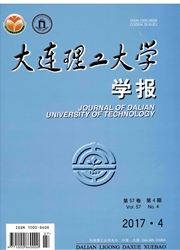

 中文摘要:
中文摘要:
在土体的剪切变形过程中,当主应力方向产生旋转时,主应变增量方向与主应力方向之间存在显著的非共轴现象.同时,机动摩擦角、膨胀角随着累积塑性偏应变的增长而增加,土体具有应变硬化的特点.传统的弹塑性本构模型不能够反映上述现象对地基承载力特性的影响.为了能够对地基承载力问题进行合理的分析,建立了一种非共轴应变硬化模型,并将该模型运用到有限元计算中.通过与三轴试验和离心机模型试验结果进行对比,对该模型在数值应用中的合理性进行了验证.研究结果表明,该模型能够对不同围压下的应力一应变关系进行预测.对浅基础承载力问题进行研究时,非共轴应变硬化模型的计算结果比传统弹塑性本构模型更加接近于离心机试验结果,验证了该模型的数值应用合理性.
 英文摘要:
英文摘要:
In the process of shearing deformation of soil, the non-coaxial phenomenon between the directions of principal strain increment and principal stress is very apparent while the principal stress direction is rotating. Meanwhile, the mobile friction angle and dilation angle increase accompanying with the accumulation of plastic deviator strain, so soil mass has strain hardening characteristic. The traditional elastic-plastic constitutive model could not reflect the influence of these phenomena on foundation bearing capacity. In order to research into the bearing capacity problem reasonably, a non- coaxial strain hardening model is suggested and adopted into the FEM calculation. The rationality in numerical application is confirmed by the comparison with triaxial test and centrifuge model test results. The test results show that this model can predict the stress-strain relation under different confining pressure. When the non-coaxial strain hardening model is used to analyze the shallow foundation bearing capacity problem, compared with the traditional elastic-plastic constitutive model, its numerical results are more close to the centrifuge test results, which indicates that this model can be adopted into the numerical analyses reasonably.
 同期刊论文项目
同期刊论文项目
 同项目期刊论文
同项目期刊论文
 期刊信息
期刊信息
